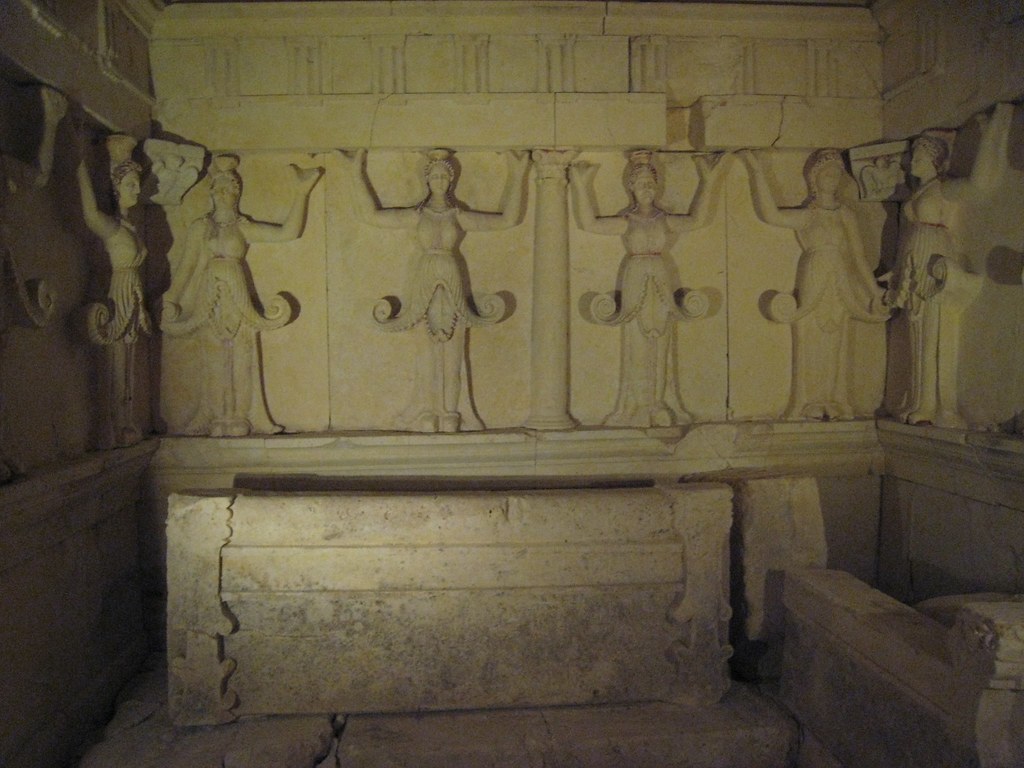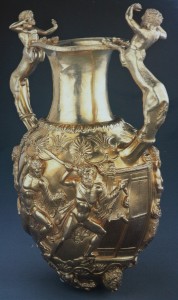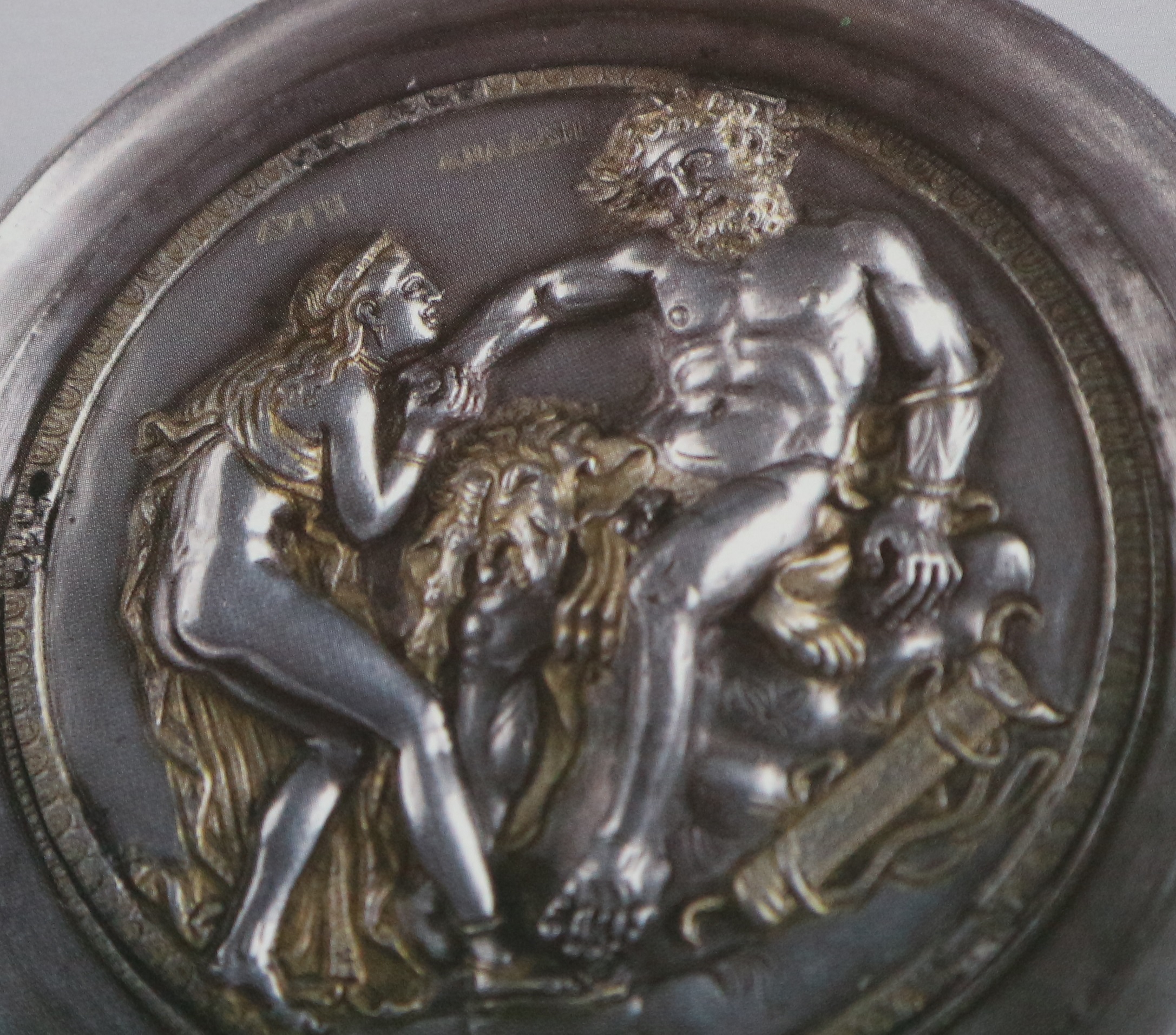The history of Bulgarian wine
The Thracians – Part 2
Continuing from Part 1
Thracian wine has been drunk from the cradle to the grave – in ceremonies when a baby was born (a sad event, because for these people the life on earth was undesired and unhappy, just a short preparation for the life beyond), during the life (food for the poor, pleasure for the rich, remedy for everyone) and when a man died (they celebrated the transition of the soul into a better world)… Exactly the graves and tombs are the only visual evidences, depicting the living of the Thracians – thanks to the precious frescoes on their walls – very often including wine ceremonies and vessels. Fortunately many of them are now open for visitors – The tomb in Kazanlak, Alexandrovo tomb, Sveshtari tomb, Golyama Kosmatka, etc. Only in The Rose Valley (a wine region as well!) are found and researched more than 15 Thracian tombs – most of them dated to 4th-3rd century BC. In recent years the area is also known as The Valley of The Thracian Kings! There is no need to say that we pay a visit there during our round wine tours in Bulgaria.
Another important artifact is the mentioned in Part 1 ornate vessels, known nowadays as “The Thracian Treasures”, which have been used during various special rituals – magnificent and amazing precisely worked out jugs, rhytons, phials, amphoras etc. This is absolutely clear evidence about the importance of the wine. The Thracians haven’t simple quenched their thirst and haven’t drunk from wineskins like the primitive cultures! They simply enchanted and respected the wine! There was a strict hierarchy in drinking the wine – the king or resp. the one with the highest rank was allowed to start first and… to get drunk first! And one more evidence – the goods in the Thracian societies belonged to the community. There were only two exclusions, having their individual owner – the sword and the wine goblet.
You may also wander how have been used these vessels? The rhyton for example had a bigger hole for pouring in and a small one for drinking (on the muffle) – the picture above. And its bottom was not smooth – the vessel had to be held in hands and drained. During Via Vino wine tours in Bulgaria we always try not to skip these precious pieces of art and admire them – presented in several museums around the country: The Treasures from Panagyurishte (consisiting of 9 golden pieces, with total weight 6 kg), Borovo (5 pieces/gold and silver), Valchitran (13 pieces, 12,5 kg/gold), Rogozen (165 pieces/silver), Lukovit (15 pieces/silver) and many more. Only the total number of phials found on the territory of Bulgaria is more than 180…
There are also sanctuaries in Eastern Rodopi Mountain where specially “equipped”, separated areas for wine production have been discovered! Our ancient varieties, still grown nowadays like Pamid, Mavrud, Misket red may have been used also by the Thracians – who knows?! The methods of wine-making were certainly much simpler but similar to the modern, following the basic steps for red wine production. The vine growers and winemakers had definitely good skills and knowledge about the vines, the climate, the soils; they were even familiar with the grafting! And they haven’t used fertilizers because were afraid of the bad smell in the wine afterwards (!).
The wine market in ancient Thracia was very well developed. The valuable good has been exported for the Mediterranean kingdoms and to the North of the continent; also by ships via Black Sea to Asia Minor… What was the price of the wine at that time? Here is interesting information from ancient Greece. 1 drachma was the price of 5 l wine. For the same money one could buy 2 l of olive oil, 25 kg dried figs, 8 kg wheat… A cow cost 50 drachma and a horse – 1 200 drachma. An architect earned daily 2 drachma, temple constructor – 2,5 drachma. Lower paid were the ship constructor, the potter, the mining workers who could afford with the loan of 1 day all in all 5 l wine.
I will end up Part 2 of the story about the Thracian wine with a funny statement, with which I always amuse Via Vino wine tour guests! The Thracians were said to be the drunkards of the ancient civilizations. What was the reason for that? They have never diluted the wine by water! What did the Thracians reply? Water is for bathing and wine is for drinking! Cheers!
And again a quick reminder about our wine tour in Bulgaria (in the Southern part) dedicated to the Thracian “On the Trails of the Thracians” / “Auf den Spuren der Thraker”
Sources & inspirations which I partly used and definitely would recommend:
1. “Виното в древността” – Ирко Петров, ТИЦ-Хасково, 2013;
2. “The Wines of Bulgaria, Romania and Moldova”, Caroline Gilby, “Infinite Ideas Limited”, 2018;
3. “Das Bulgarische Weinbuch”, Jassen Borislavov, Trud, 2006;
4. “The Wine of the Thracians. Myth, Ritual and Art”, Ivan Marazov, Academic Book Market Publishers LTD, Sofia, 2014
The image above was made by one of our wine tour guests. All rights reserved.










